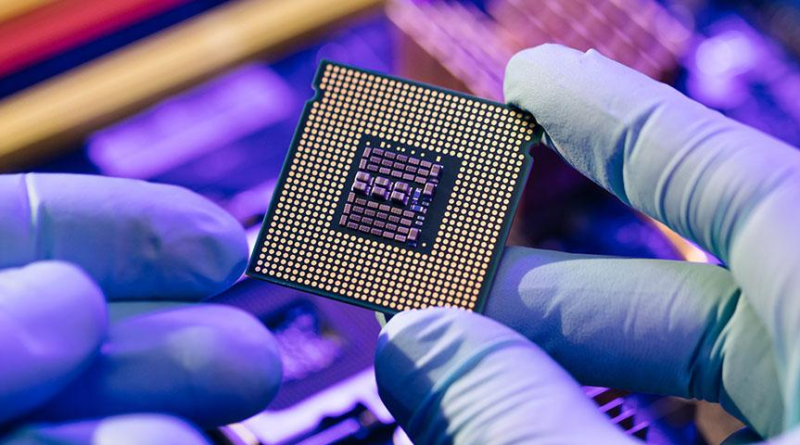China Market Update: Internet Stocks Outperform As Nvidia Sinks Hong Kong Semiconductor Stocks – Forbes
CLN
Asian equities rebounded overnight on light volumes and light news, except Mainland China which has struggled the last five trading days.
Hong Kong stocks bounced around the room but managed a small gain, led higher by the internet, electric vehicle, big bank, and energy giant sectors, while technology underperformed, led lower by semiconductors, hardware, and Apple’s ecosystem. Hong Kong’s most heavily traded stocks by value were Tencent, up +0.42% as its new Dungeon & Fighter mobile game hauls in $270 million in the last month, Meituan, up +1.21% with speculation that the company may issue a convertible bond to fund buybacks, BYD, up +0.84% on yesterday’s policy support and talk of China lowering its EU auto import as the Art of the Deal goes global, Alibaba, up +0.83%, and China Construction Bank, up +0.35%.
Mainland China stocks struggled other than the big banks and Kweichow Moutai, with chatter pointing to new personal income tax rules coming. President Xi gave a speech at the National Science and Technology Conference highlighting the importance of technological innovation and industrial innovation. Premier Li gave the opening speech at the Summer Davos Forum, highlighting China’s opening up and the benefits of “an open world economy.” Among the 1,600 attendees were our very own Jonathan Krane and Xiaolin Chen who should have some good insights from the event.
The National Team’s favorite ETFs saw elevated volumes for the third day in a row, though volumes were off slightly. The Ministry of Finance released year-to-date (YTD) data through May showing SOE profits are up +3.1% year-over-year (YoY), though personal income tax fell -6% and stock trading stamp duty revenue fell -50.8% YoY. The latter sums up the lack of domestic/consumer confidence, which explains the Mainland’s lack of animal spirits as households stay conservative. This is despite a research piece showing household wealth has increased YoY. In theory, there is plenty of dry powder that could come into the market if properly incentivized. High stock dividends versus low bank deposit/money market fund/fixed income yields could be a catalyst, though we are not seeing that quite yet.
Housing price declines have hit households’ balance sheets, so the space should receive significant attention in July’s Third Plenum economic meeting. The disparity between onshore China/Shanghai & Shenzhen Exchanges/domestic investors versus offshore China/Hong Kong & US ADRs/foreign investors is important for investors to understand. On the positive side, it was reported that 1,600 companies have bought back RMB 96 billion of stock YTD. While households remain conservative, Chinese financial professionals are buying Chinese stocks, as evidenced by large inflows into Mainland-listed China ETFs. There is some chatter of the US government looking into Chinese telecommunication companies’ US operations, but I doubt anyone cares.
The Hang Seng and Hang Seng Tech diverged +0.25% and -0.6%, respectively, on volume -2.83% from yesterday, which is 91% of the 1-year average. 259 stocks advanced, while 215 declined. Main Board short turnover increased by +13.68% from yesterday, which is 89% of the 1-year average, as 17% of turnover was short turnover (Hong Kong short turnover includes ETF short volume, which is driven by market makers’ ETF hedging). Value and large caps outperformed growth and small caps. The top sectors were real estate, up +1.85%; industrials, up +1.15%; and utilities, up +0.94%, while technology was the only negative sector, down -1.98%. The top sub-sectors were business/professional services, household products, and automobiles, while semiconductors and technical hardware were the worst. Southbound Stock Connect volumes were light as Mainland investors bought $41 million of Hong Kong stocks and ETFs.
Shanghai, Shenzhen, and STAR Board fell -0.44%, -0.46%, and -2.89%, respectively, on volume -6.61% from yesterday, which is 78% of the 1-year average. 2,505 advanced while 2,380 declined. Value and large caps fell less than growth and small caps. The top sectors were real estate, up +0.97%; materials, up +0.48%; and staples, up +0.2%, while technology was down —2.93 %, communication services was down —1.08 %, and healthcare was down -0.7%. The top sub-sectors were petrochemicals, forest, and construction, while semiconductors, computer hardware, and power generation equipment were the worst. Northbound Stock Connect volumes were moderate/light as foreign investors were net sellers of Mainland stocks. CNY was off versus the US dollar. Treasury bonds rallied. Copper gained while steel fell.
New Content
Read our latest article:
How to Buy the Same Stocks as China’s Sovereign Wealth Funds
Please click here to read
Chart1
Chart2
Chart3
Chart4
Chart5
One Community. Many Voices. Create a free account to share your thoughts.
Our community is about connecting people through open and thoughtful conversations. We want our readers to share their views and exchange ideas and facts in a safe space.
In order to do so, please follow the posting rules in our site’s Terms of Service. We’ve summarized some of those key rules below. Simply put, keep it civil.
Your post will be rejected if we notice that it seems to contain:
User accounts will be blocked if we notice or believe that users are engaged in:
So, how can you be a power user?
Thanks for reading our community guidelines. Please read the full list of posting rules found in our site’s Terms of Service.

